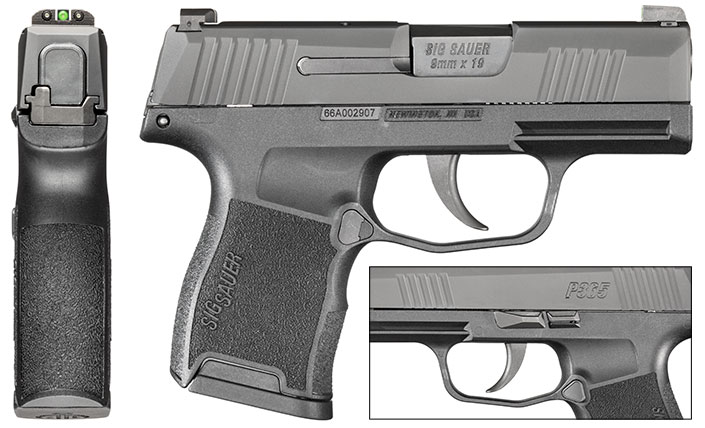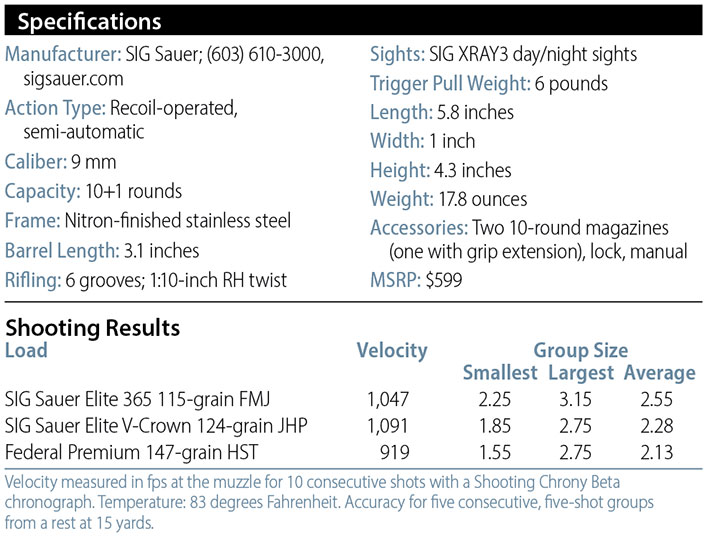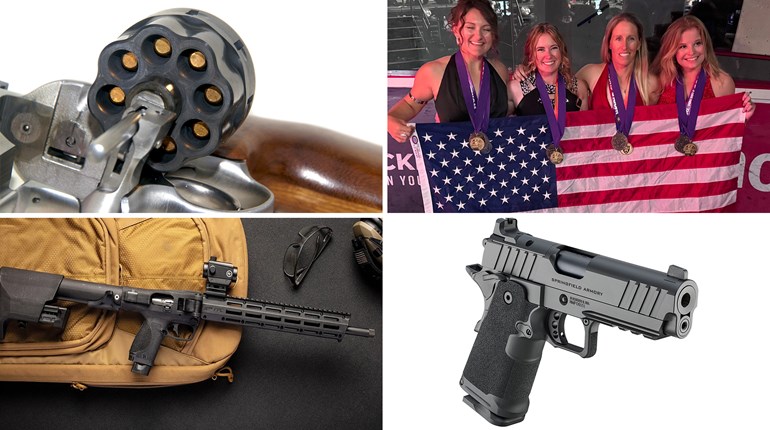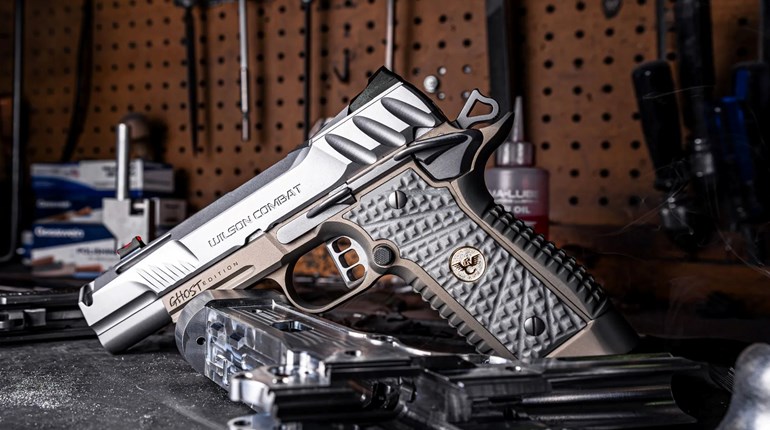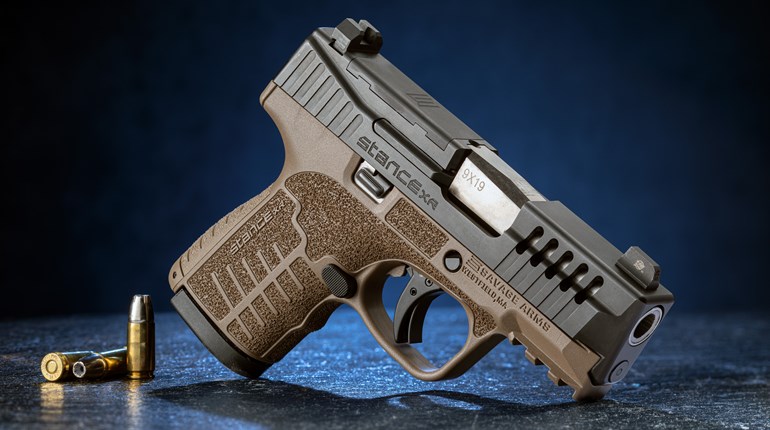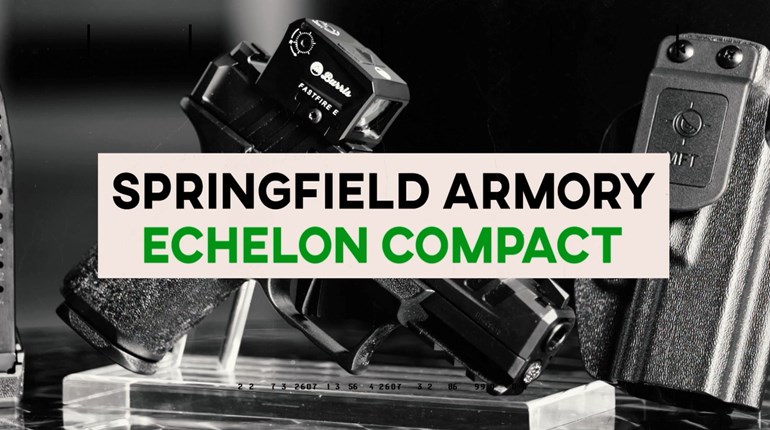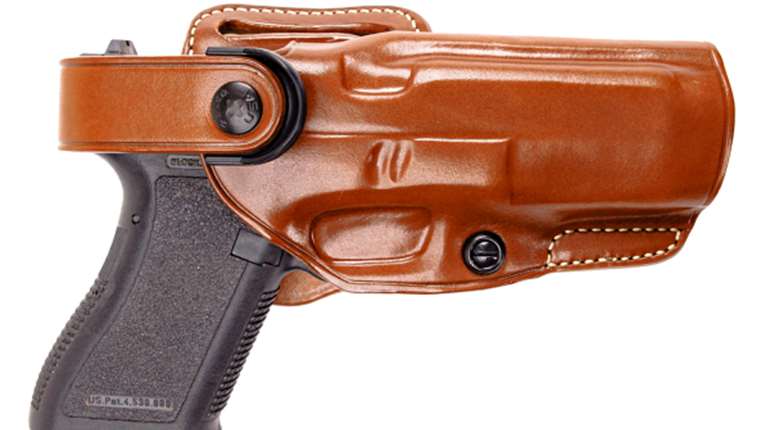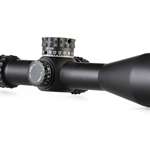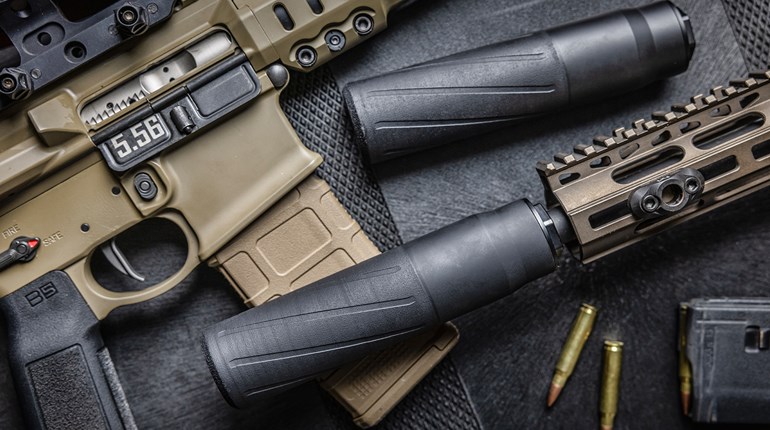
If there is a hotter niche in the handgun market right now than slim, subcompact 9 mm autos, I can’t think what it would be, and the SIG Sauer P365 is poised to bring that market to new heights, thanks to a radical design.
The subcompact-nine genre was pretty much launched by the Kahr Arms K9 and its variants, which were greeted by that demographic who value the greater concealability of the slimmer single-stack over the chunky lines of the Glock G26, which had been chopped down from a full-size duty pistol.
Maybe it was because the number of states with shall-issue CCW or Constitutional Carry had not reached a critical mass yet in the late 1990s that these remained something of a niche product. There were incremental additions at both ends of the market, from the value-priced Kel-Tec PF-9 to the luxo-ticket Rohrbaugh R9, but it wasn’t until the early 2010s that it really blew open.
Smith & Wesson’s Shield and, a couple years later, the Glock G43, were among the hottest-selling new handguns launched in all the years I’ve been in this business. Waiting lists were long, guns blew out of the store as fast as we could get them in and there was obviously a huge, pent-up demand for guns of this style. Even the most “tacticool” folks I knew, the sort who regularly CCW’ed full-size M&Ps or Glock G34s with slide-mounted red-dot sights and SureFire X300U lights, snatched up these little things to carry in workout clothes or when extreme concealment was necessary.
SIG Sauer had to want some of that pie. Until the SIG Sauer P365, the only offering it had of the type was the 9 mm P290, but it suffered in the popularity department for being a hammer-fired DAO gun, as well as from having punishing “trigger slap” while firing, a direct consequence of the hammer-fired action and the high slide velocities of a tiny gun in a service chambering.
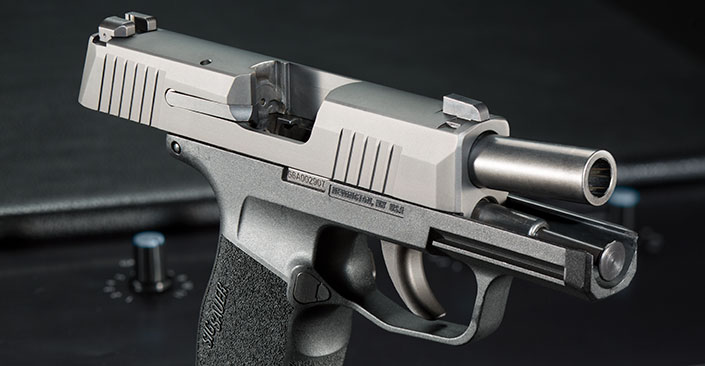
So it was with great fanfare that SIG unveiled a new pistol at SHOT Show 2018, a model designed to fit this same niche; a tiny and slim striker-fired, service-caliber semi-automatic—only the new SIG Sauer P365 would have a double-stack magazine.
“Big deal,” was my initial thought, “So do the Glock G26 and the P320SC.”
Ah, but this thing is the size of the little single stacks, all slim and svelte, but with a full 10-round capacity in a flush-fitting magazine.
Mind. Blown.
The first experience shooting it was like watching clowns pile out of the tiny car at the circus. Surely it was going to lock back, empty. Any shot now… But no, it kept going. Ten rounds don’t seem like a lot when compared to full-size service guns, but the SIG Sauer P365 is slightly smaller than its chief competitors, yet holds a whopping 66 percent more ammunition, despite using flush-floorplate magazines. As I type this, the test gun is on the desk near me, next to my own G43, and I’m just gobsmacked at their relative sizes.
It’s a good-looking little pistol, at least if you’re a fan of the minimalist, plastic-striker pistol aesthetic; sort of the Shaker furniture of the handgun world.
Styling is obviously speaking the same design language as the bigger P320 series, with squared-off lines whose severity is mellowed by tapered bevels along the top corners of the slide. There are forward cocking serrations, just like on the bigger guns. I personally don’t make much use of them, especially on guns so tiny, but they’re there for those who do.

Looking at the top of the slide, you’ll find a set of SIG’s new X-RAY3 tritium-powered night sights. While the X-RAY3s sport the usual three tritium vials, only the one on the front has a contrasting insert surrounding it. This way, during the sort of conditions where you don’t need the tritium (which is most of the time) you have a big green circle encircling the dot on the front sight, to keep your eye’s focus there. The vials in the rear sight are subdued enough to not be distracting unless the lighting’s poor enough that you actually need them to verify proper elevation.
Also atop the slide, you’ll notice a small rectangular window in the rear edge of the barrel hood, providing a glimpse of cartridge brass, should a round be chambered. The extractor is of the external, pivoting sort, and the slide’s guts are retained by a cover plate on the rear like other pistols of this ilk.

The frame on the SIG Sauer P365 is also very P320-esque in its overall contour and various textured bits. There’s a small, low-profile slide release located just above the trigger guard and abaft the takedown lever, which is likewise small and quite low-profile. Another familial trait is that said magazine release is triangular in shape and reversible, just like on its larger siblings. The abbreviated grip has textured panels on the sides, front and rear that feature the same grippy-without-being-outright-abrasive texture that has become practically a brand-identity badge for SIG pistols.
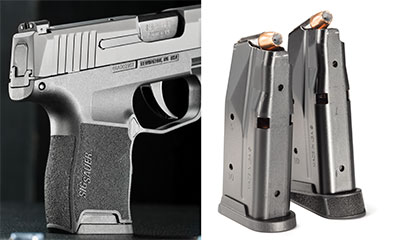
There’s some obvious thought that has gone into the placement of the texturing, too. The side panels stop at the slight recesses for the thumb and trigger finger, while the backstrap texturing comes to a halt before the frame rolls over into the tang, so as to avoid chewing into the web of the hand.
Most noticeable on the SIG Sauer P365 is the detailing on the frontstrap. While the gun doesn’t have finger grooves, as such, there’s a scalloped-out area for the second finger of the shooting hand, paired with an upward recess in the trigger guard. This area is devoid of texturing and seems intended to prevent the malady known in popular slang as “Glock knuckle,” or a raw spot on the knuckle of the strong-hand middle finger. Shooters were obviously consulted in the design of this pistol.
The only real ergonomic downside to the frame is one that is nearly unavoidable in a pistol this small. To wit, if the shooter has grownup-size hands, it’s easy to foul a magazine change in a couple of ways. If you don’t juggle the pistol a little bit in the hand, you can prevent the mag catch from protruding out the far side enough to prevent the magazine from releasing.
Further, if you don’t juggle the gun around in your hand enough when dropping the magazine, the floorplate will foul against the heel of your shooting hand, trapping the empty magazine in the SIG Sauer P365. You’ll need to work out your own hand jive for efficient mag changes. Fortunately, a 10-round magazine capacity may make needing to do them in a hurry for real less of a concern.

One big difference in the frame between the P365 and its closest competitors can be found on the dustcover. Unlike the Glock G43 and Smith & Wesson Shield, the P365 has an accessory rail—sort of. Due to the dimensions of the dustcover, there’s no way that a standard Picatinny-type accessory rail would fit there. Instead, there are long grooves on each side and no cross slot.
SIG would appear to be planning on releasing a line of P365-specific accessories that use these mounting grooves and, at least as of the time of this writing, there are already red and green laser modules available, complete with grip-activation pads that wrap below the trigger guard to the frontstrap.
In overall dimensions, the SIG Sauer P365 is smaller than the G43 in nearly every dimension, being less than 4.25 inches in height and well under 6 inches in overall length. The only dimensions in which it exceeds its rival from Smyrna are in the width of the grip below the magazine-release button, where it’s .1-inch wider, and in distance from the backstrap to the trigger. Differences in the internal mechanics place the SIG trigger slightly farther forward than the Glock’s, but unless you shop for gloves in the children’s department, the difference likely isn’t enough to affect trigger pull.
Speaking of trigger pull, the SIG Sauer P365’s is quite useable, with a longish takeup having only moderate resistance before hitting a “rolling break.” Pull weight on my test sample measured a quite consistent 6 pounds on my RCBS fish scale.
Recoil, like the G43, is milder than it has any right to be in a 9 mm pistol of this size and weight. You can’t get rid of physics entirely, but by juggling spring weights, locking-block geometry and other factors, you can sweep rather a lot of it under the rug.

This was fortunate, because your faithful correspondent managed to break her collarbone shortly before the test gun arrived, and thus about half a case of ammo was sent downrange shooting strong-hand-only. Even though rather a lot of it was serious defensive stuff, like 147-grain Federal Premium HST and SIG’s 124-grain V-Crown JHP, at no point was recoil too unpleasant to do an extended one-handed range session.
In all those 485 rounds, I only experienced one malfunction, and that was a classic “limp wrist” while shooting chrono strings and not paying attention to my grip.
Among the different ammunition run through the test SIG Sauer P365 was some of SIG’s new “365” ammunition optimized for short-barreled carry guns. The 365 ammo line consists of 115-grain FMJ and JHP offerings, loaded to be ballistically identical so that training ammo and carry ammo will feel the same.
SIG claims a muzzle velocity for both 365 loads of 1,050 fps and, in testing, we recorded an average of 1,047 fps for the FMJ and 1,051 for the JHP. That’s the closest to box-flap velocity claims I’ve seen in all the time I’ve owned a chronograph. Weirdly, however, the hollow points printed almost exactly 1 inch higher at 15 yards that day at the range. That was just the one string of fire, though, and further testing could prove it a fluke.
One last thing noted from testing was that the striker nose did leave the “primer wipe” on the cartridges that’s had discussions abuzz online. A lot of that comes from the fact that primer wipe (elongated marks on the primer left by the firing-pin nose) on a tilting-bolt self-loading rifle is almost always a sign of early unlocking and therefore makes handloaders cringe at the sight.
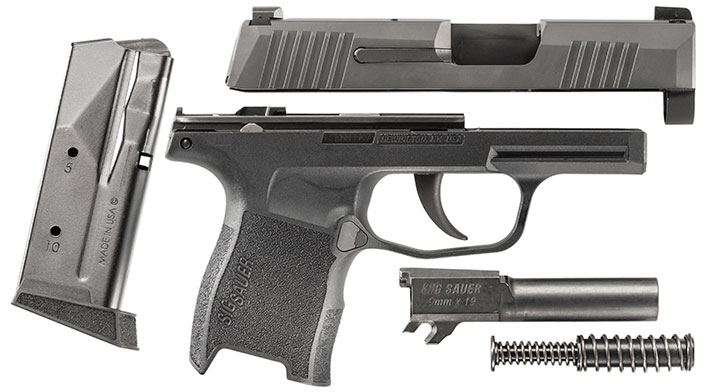
However on a tilting-barrel, recoil-operated pistol, early unlocking would be accompanied by shotgun-pattern groups that exhibited lots of vertical stringing, and the SIG Sauer P365 did nothing of the sort. It’s been my experience that this is more or less endemic to small guns with high slide velocities. As long as the striker nose is robust, which SIG seems to have corrected after a flawed initial run, there’s no danger to durability.
Further, my contacts at Grayguns are making noises about a suite of performance enhancements for the gun that have me intrigued.
I’m not going to lie, my experiences with the gun so far have been positive enough to leave me intrigued. I’m going to see if I can’t arrange to hold on to the test sample long enough to put a more serious round count through it. If things keep going as they are, I have a feeling I’ll be mailing a check back to New Hampshire instead of the gun.
